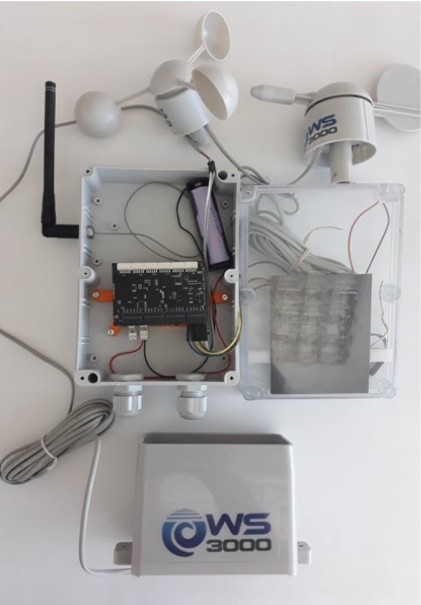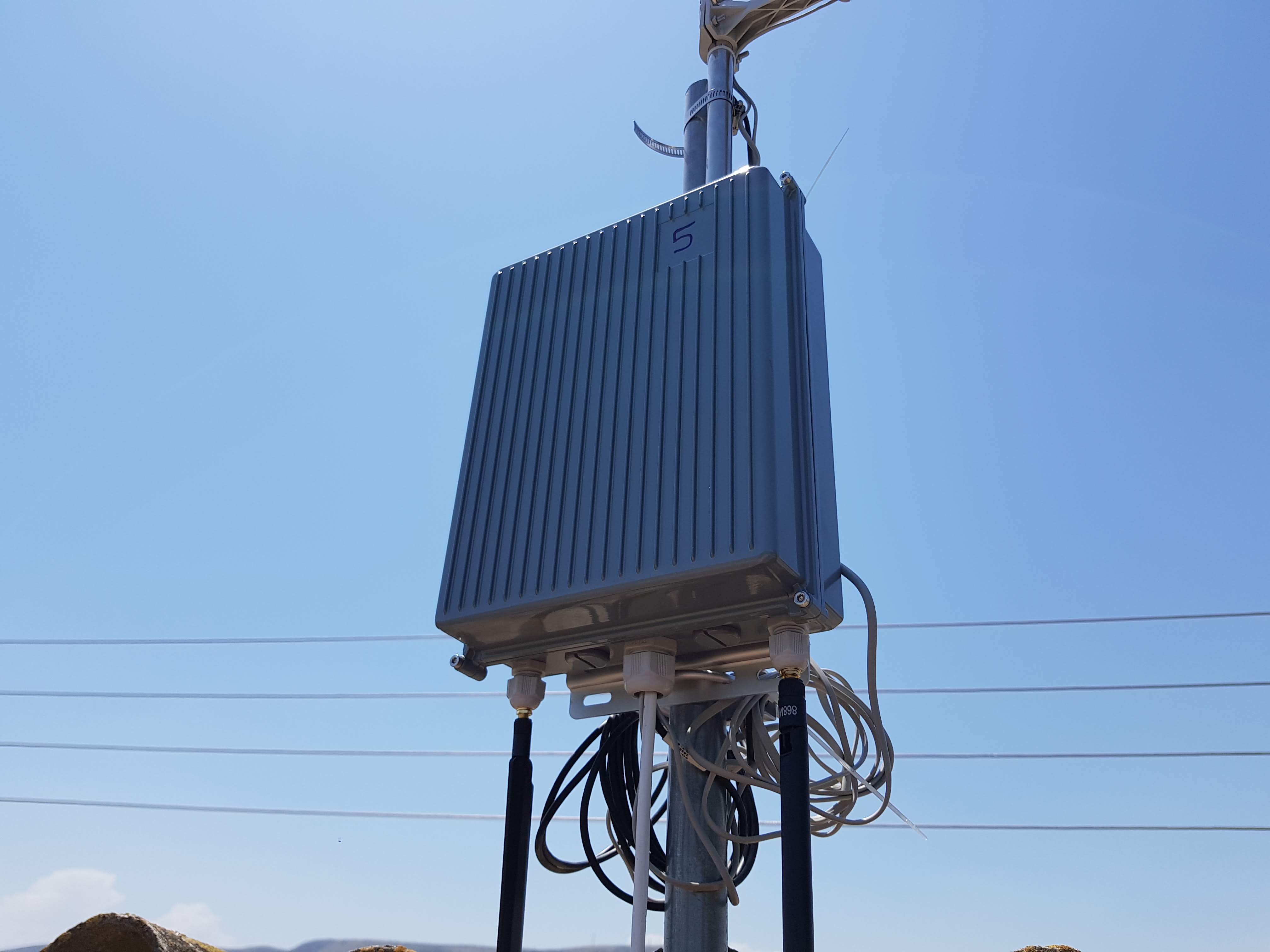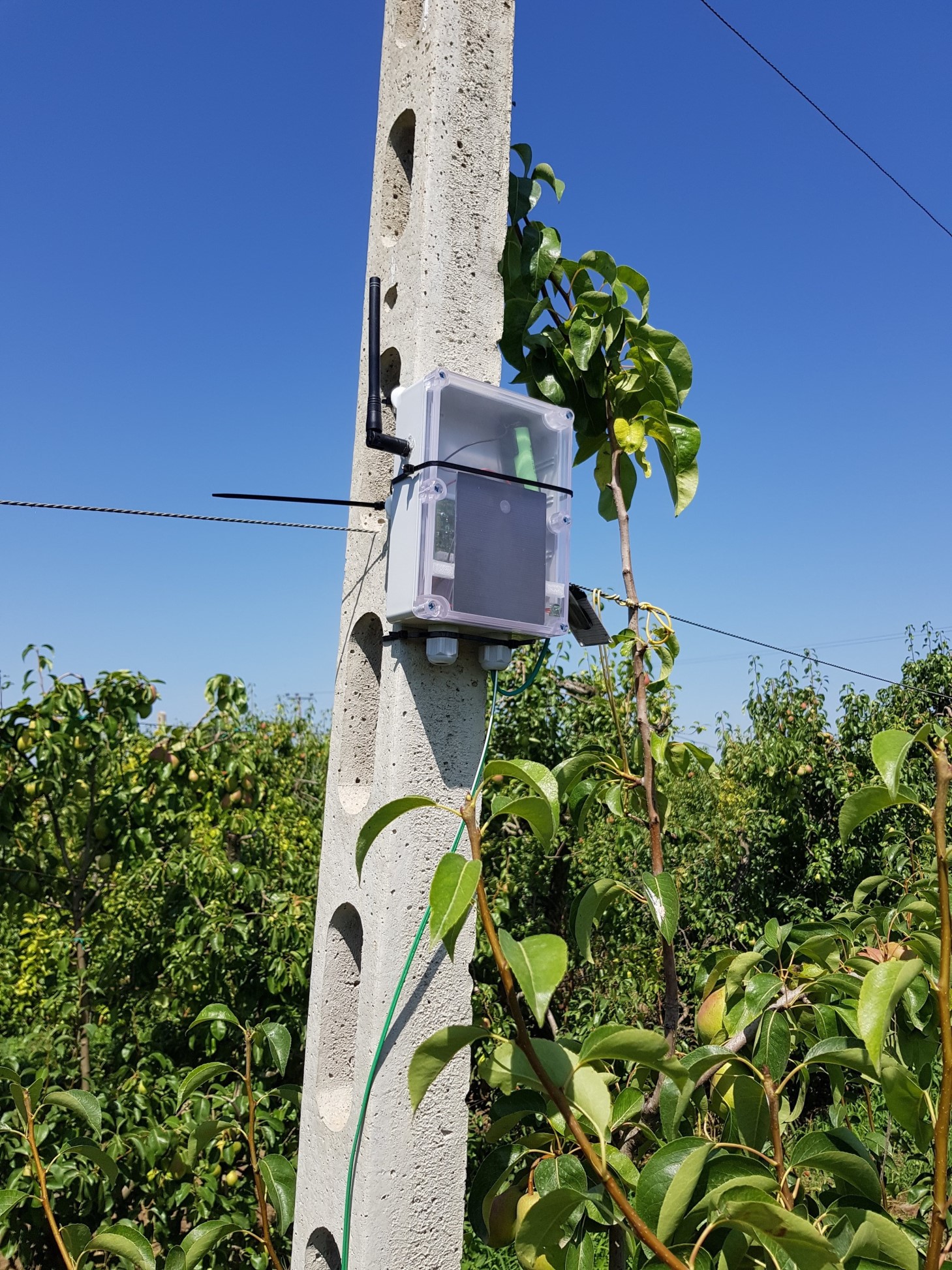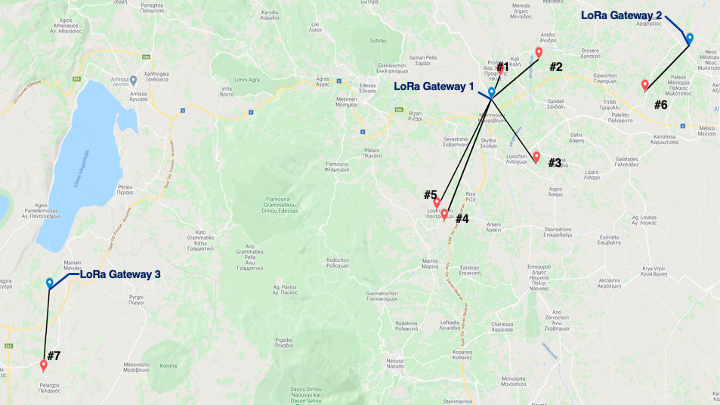
Testbed Topology
The LoRa Agricultural testbed consists of three LoRa Gateways (GW) that are deployed in three crop fields and 7 Sensing nodes that are scatted across the area of North Macedonia, Greece. The end nodes feature various sensors related with meteorological and agricultural measurements. We clearly observe that the testbed offers a wide range of wireless links that differentiate in terms of communication distance, elevation difference and LOS/NLOS conditions. For each node, we also note the amount of payload bytes transmitted when transferring the respective number of sensed parameters, which includes 5 Bytes per environmental parameter plus 9 Bytes of own protocol overhead, while it does not include the LoRa preamble, header and CRC. In Fig. 1 presents the topology of our testbed, while in Fig. 2 you can find the architecture of our system. Below we present the custom developed GW and sensing devices, as well as the software toolkit for obtaining LoRa performance measurements.
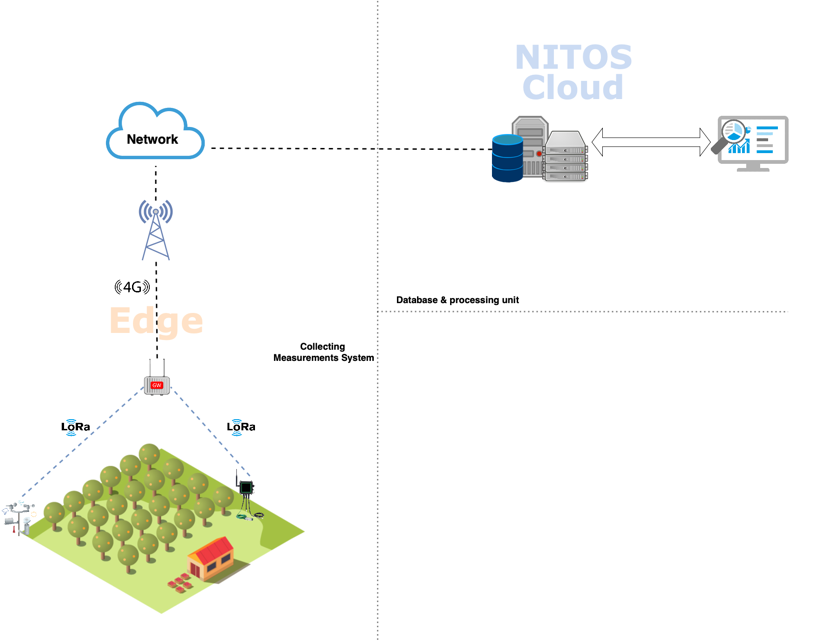
LoRa Gateway: The GW is based on the BeagleBone Black Rev. C board which is a low-cost, embedded platform characterized by sufficient processing power capabilities (ARM Cortex-A8 Processor at 1 GHz with 512 MB RAM) and several I/O pins. It also includes a USB port which is used for a 3G/4G interface for communicating with the backbone network. On top of BeagleBone we attach a custom-designed PCB board (cape) that integrates our electronic components and features a slot for connecting a LoRa transceiver. More specifically, the cape features the MK20DX128VLH5 micro-processor which is interfaced with the LoRa transceiver responsible to run all the requisite libraries for its operation. The micro-processor software is also responsible of implementing a polling mechanism to aquire measurements from the sensor nodes and also initiate the link quality experiments. For the LoRa transceiver we employ the SX1272 chipset manufactured by Semtech, which is paired with a 4.5 dBi antenna. Fig. 3(b) presents one LoRa Gateway device deployed in the field..
LoRa Sensing Devices: Our setup consists of two types of edge devices, the meteo and the agricultural. Both devices are power by Libelium’s Waspmote processing module an employs the same LoRa interface (SX1272) as the gateway device, attached to a 4.5 dBi omni-directional antenna. The meteo nodes features 9 sensors in total which provide measurements about temperature, humidity, atmospheric pressure, air speed, air direction, rainfall percentage and solar radiation. Also they utilize and the features from the agricultural nodes which are leaf wetness, soil moisture. The agricultural nodes features 5 sensors in total which provide measurements about temperature, humidity, atmospheric pressure, leaf wetness and soil moisture. The micro-processor hosts a program that implements the sensor reading and collection of measurements, and also the communication between itself and the SX1272 module. Finally, both sensing devices are battery powered and they are equipped also with a solar panel capable of recharging the batteries. The devices in every communication with the GW provide measurements about battery percentage and current provided by the solar panel in mA.Fig.3(a) presents one meteo device attached with a solar panel and the meteo sensors and Fig.3(c) presents an agricultural device attached with a solar panel and the agricultural sensors deployed in the field.
Software Toolkit: Through the deployed list of devices, we continuously collect detailed air quality measurements, while also evaluate the performance of the employed LoRa communication links. The overall procedure is orchestrated at the GW level, which periodically polls the different sensing nodes that continuously remain in receive mode. Sensor polling is executed in a Round-robin fashion, instructing sensors to transmit collected measurements (with an interval of 10 minutes) or to participate in a link quality evaluation experiment (executed once per day). The two procedures are executed independently of each other, taking advantage of the employed polling approach, which enables us to avoid the impact of overlapping transmission interference, when performing link quality experiments. Upon receiving a request for experiment, each sensing node transmits 10 consecutive packets at the data rate, payload length and transmission power that has been determined by the GW. The gateway sends the experiment settings embedded to the experiment request packet. The per-node link quality of the network is determined through the Packet Delivery Ratio (PDR) of the aforementioned experiments.
